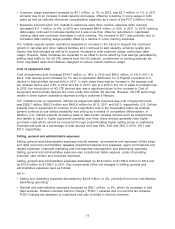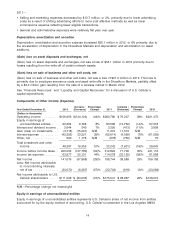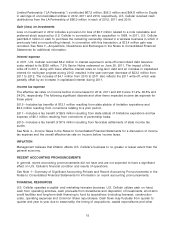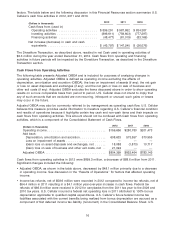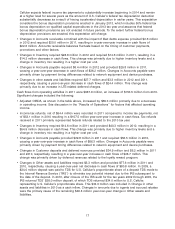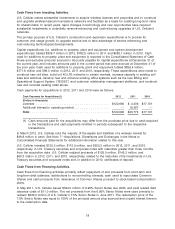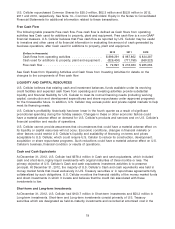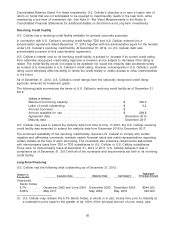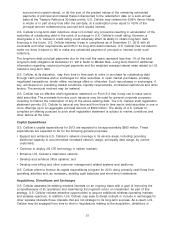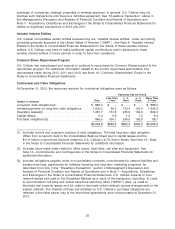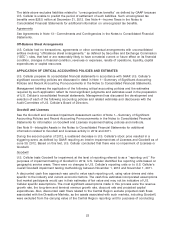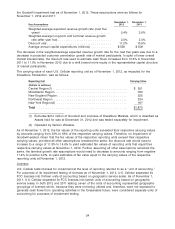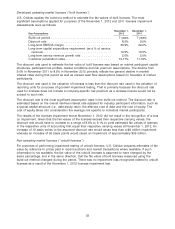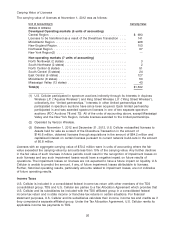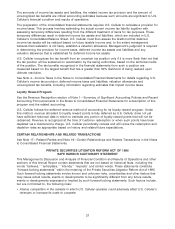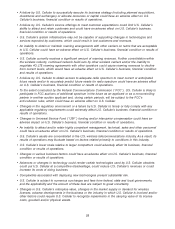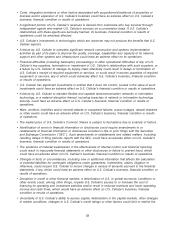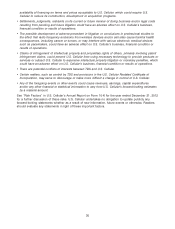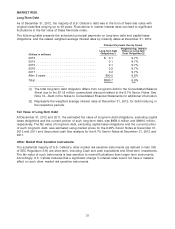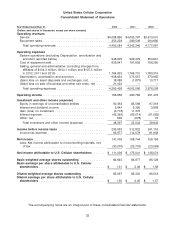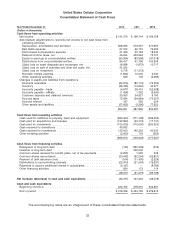US Cellular 2012 Annual Report Download - page 31
Download and view the complete annual report
Please find page 31 of the 2012 US Cellular annual report below. You can navigate through the pages in the report by either clicking on the pages listed below, or by using the keyword search tool below to find specific information within the annual report.
The table above excludes liabilities related to ‘‘unrecognized tax benefits’’ as defined by GAAP because
U.S. Cellular is unable to predict the period of settlement of such liabilities. Such unrecognized tax
benefits were $26.5 million at December 31, 2012. See Note 4—Income Taxes in the Notes to
Consolidated Financial Statements for additional information on unrecognized tax benefits.
Agreements
See Agreements in Note 13—Commitments and Contingencies in the Notes to Consolidated Financial
Statements.
Off-Balance Sheet Arrangements
U.S. Cellular had no transactions, agreements or other contractual arrangements with unconsolidated
entities involving ‘‘off-balance sheet arrangements,’’ as defined by Securities and Exchange Commission
(‘‘SEC’’) rules, that had or are reasonably likely to have a material current or future effect on its financial
condition, changes in financial condition, revenues or expenses, results of operations, liquidity, capital
expenditures or capital resources.
APPLICATION OF CRITICAL ACCOUNTING POLICIES AND ESTIMATES
U.S. Cellular prepares its consolidated financial statements in accordance with GAAP. U.S. Cellular’s
significant accounting policies are discussed in detail in Note 1—Summary of Significant Accounting
Policies and Recent Accounting Pronouncements in the Notes to Consolidated Financial Statements.
Management believes the application of the following critical accounting policies and the estimates
required by such application reflect its most significant judgments and estimates used in the preparation
of U.S. Cellular’s consolidated financial statements. Management has discussed the development and
selection of each of the following accounting policies and related estimates and disclosures with the
Audit Committee of U.S. Cellular’s Board of Directors.
Goodwill and Licenses
See the Goodwill and Licenses Impairment Assessment section of Note 1—Summary of Significant
Accounting Policies and Recent Accounting Pronouncements in the Notes to Consolidated Financial
Statements for information on Goodwill and Licenses impairment testing policies and methods.
See Note 8—Intangible Assets in the Notes to Consolidated Financial Statements for additional
information related to Goodwill and Licenses activity in 2012 and 2011.
During the second quarter of 2012, a sustained decrease in U.S. Cellular’s stock price resulted in a
triggering event, as defined by GAAP, requiring an interim impairment test of Licenses and Goodwill as of
June 30, 2012. Based on this test, U.S. Cellular concluded that there was no impairment of Licenses or
Goodwill.
Goodwill
U.S. Cellular tests Goodwill for impairment at the level of reporting referred to as a ‘‘reporting unit.’’ For
purposes of impairment testing of Goodwill in 2012, U.S. Cellular identified five reporting units based on
geographic service areas. There were no changes to U.S. Cellular’s reporting units or to U.S. Cellular’s
overall Goodwill impairment testing methodology between November 1, 2012 and November 1, 2011.
A discounted cash flow approach was used to value each reporting unit, using value drivers and risks
specific to the industry and current economic factors. The cash flow estimates incorporated assumptions
that market participants would use in their estimates of fair value and may not be indicative of U.S.
Cellular specific assumptions. The most significant assumptions made in this process were the revenue
growth rate, the long-term and terminal revenue growth rate, discount rate and projected capital
expenditures. Also, discounted cash flows related to the Central Region exclude projected cash flows
associated with the Divestiture Markets, as the assets associated with such markets, including Goodwill,
were excluded from the carrying value of the Central Region reporting unit for purposes of conducting
23


